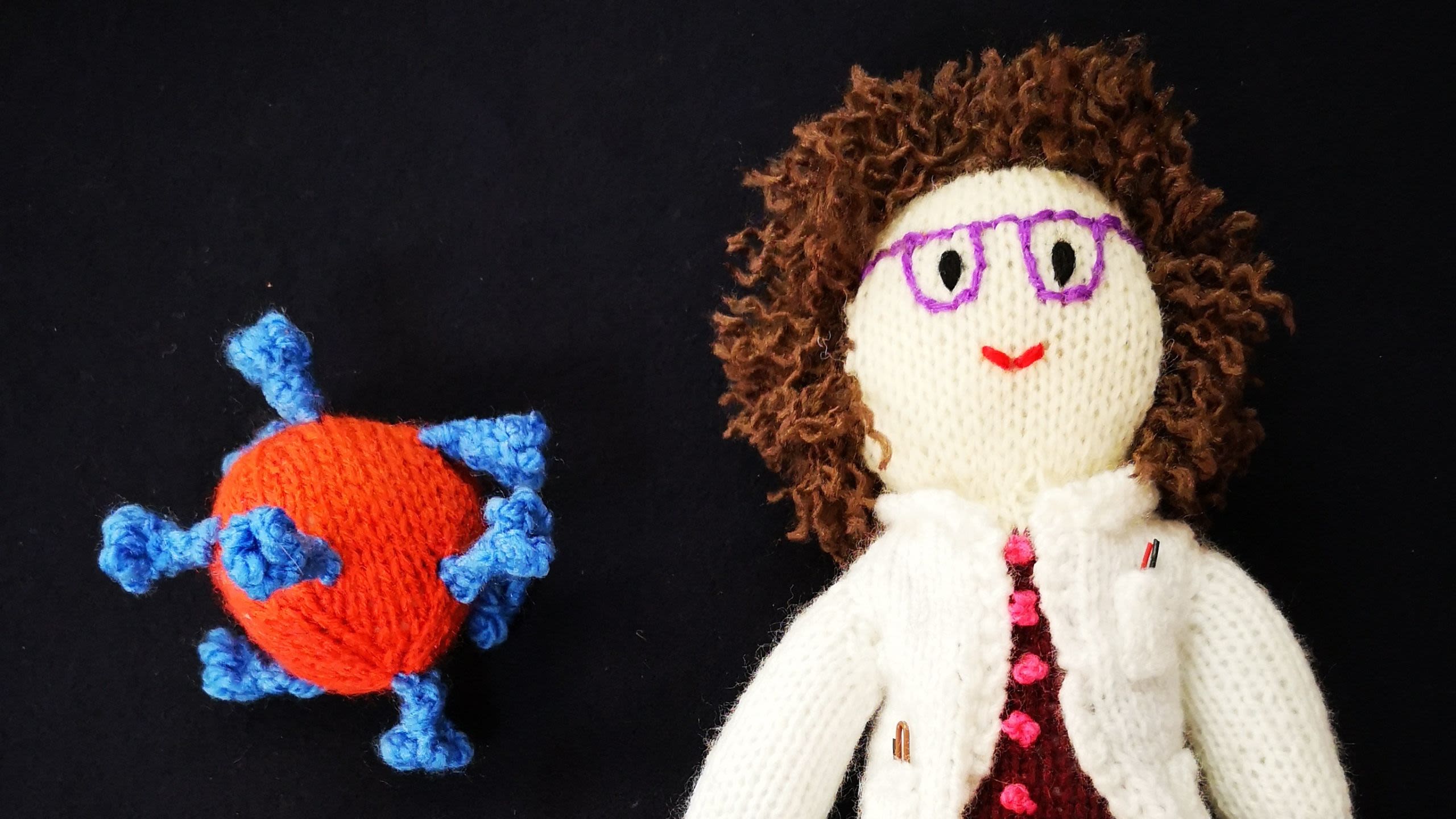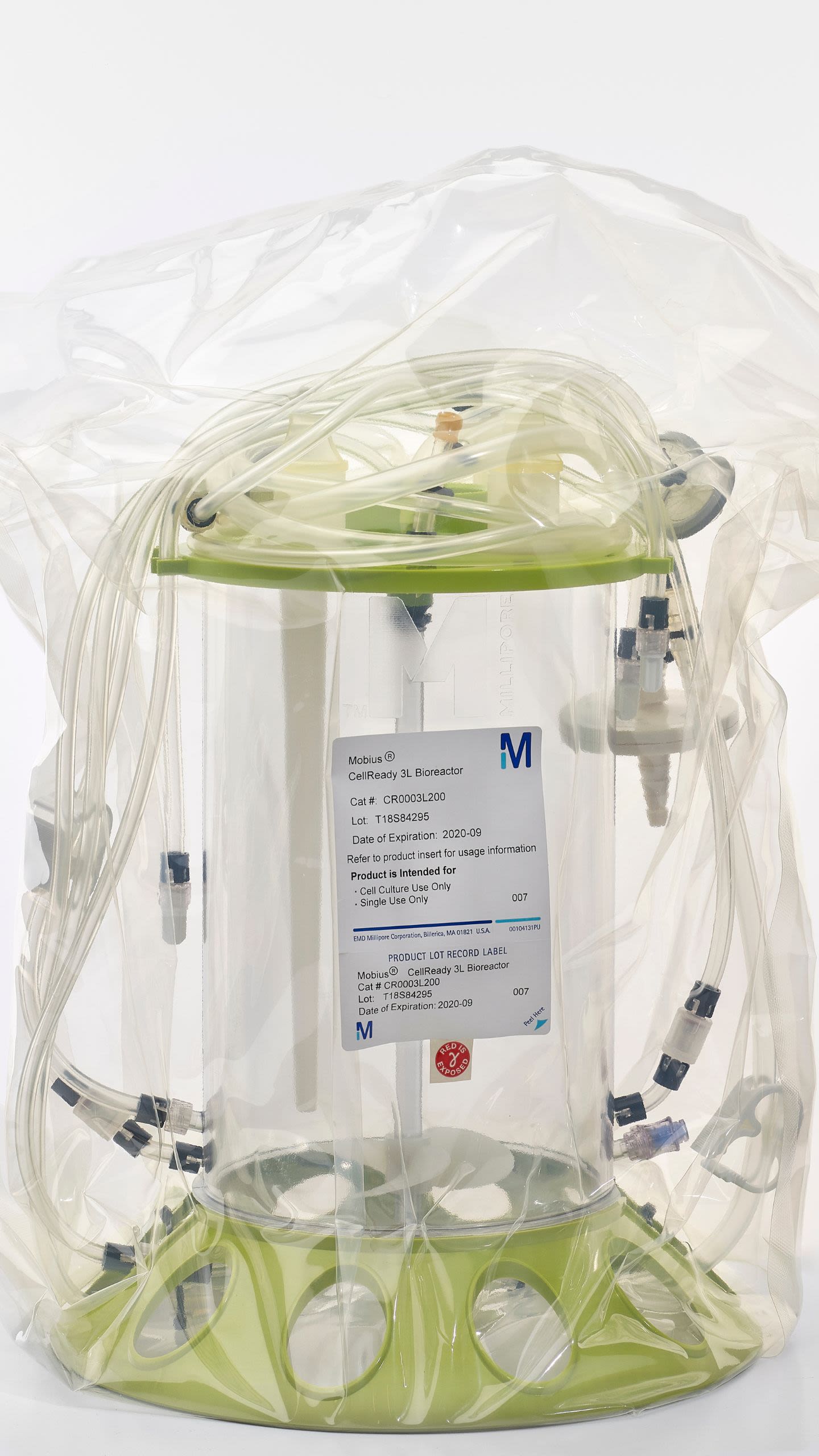On the Frontline
Personal stories from scientists in a pandemic

There is so much pressure to deliver a vaccine
It's new year 2020.
We're in the early days of the first global pandemic for a century.
Teams of people are working together — but there are critical stages where it's the knowledge and effort of just one person that count.
How does it feel when the whole world is waiting — hoping — for your results?
Oxford’s scientists talk about that pressure — and how their families, colleagues and hobbies helped them cope.
Cracking the Code
Dr Sue Morris
Researcher, Oxford Vaccine Group

It's January 2020.
The virus we now know as COVID-19 doesn't yet have a name.
That's why this box says, “Wuhan CoV”.
To make the vaccine, Dr Susan Morris is developing the method for inserting this DNA into an existing adenovirus genome.
Just a year from now, medical professionals will begin the task of injecting more than 2 billion doses of the Oxford AstraZeneca vaccine across the world.
And they will all stem from this sample.
"You're just mummy ..."

"I felt guilty for being a working mum, leaving my husband to home-school two children.
"When I told my daughters I have to go to work as I am officially a VIP, their response was,
'No, you're just Mummy, they can’t have you all the time.'
"My youngest daughter’s favourite teddy is a care bear — Sunshine bear — also known as 'the get-better bear' in our house.
"As I left for work — the day after I realised my method had failed — she stopped me and asked if I would take Sunshine bear with me, adding:
'If he sprinkles his magic over the vaccine, it will make it work and everyone will get better.'
“They're now, 2 years later, very proud of the part I played in producing the vaccine."
Dr Susan Morris, Researcher, Oxford Vaccine Group

'Brewing' millions of doses
Dr Adam Ritchie
Senior Vaccine Programme Manager

In the early days of 2020, the Oxford Vaccine Team is responding quickly to the global pandemic.
That means finding a new way to make millions of vaccine doses — fast.
Scientists use bioreactors to grow vaccine — a bit like brewing beer.
So the team starts with small 3-litre bioreactors like this one.
But they soon need to work out how to produce much larger amounts.
It's now March 2020.
After weeks of intense work, the first 50-litre run is a success.
For the first time, it's possible to make enough for clinical trials — and, eventually, to launch a global vaccination programme.
"I wept at my desk for what felt like hours"

Before January 2020, the Jenner Institute had been improving vaccine manufacture by moving from using flasks to bioreactors.
Once a flask gets too big, the vaccine manufacturing process stops working effectively. That means if you want to double the amount of vaccine you are making, you need to double the number of flasks.
But bioreactors are much better at pumping nutrients and waste in and out. That means if you want to double the amount of vaccine you are making, you can just double the size of the bioreactor.
During February to May 2020, with the pandemic raging around them, Dr Sandy Douglas, Dr Carina Joe, and Dr Adam Ritchie (who you can see in the picture) worked long hours to supply enough vaccine for clinical trials — and then the world — all in record time.
To speed up the process, Adam and his colleague Iona got permission to take a flask of cells to a laboratory in Portsmouth during lockdown.
“On that first trip, it was eerie. The only other things on the road were a few lorries, and it was a pretty busy road (A34) normally.
“That first run at 50L was carried out over the week or so after our delivery … It isn’t medical grade, it was to show we could scale up the manufacturing as we had theorised.
“When we ... measured that it was full of vaccine (late March/early April 2020), I wept at my desk for what felt like hours.
“I’d been working 100 hours a week for about 6 weeks.
“It was a huge relief, to show we could do it but also it made delivering billions of doses to the world possible for the first time.
“A week or so later, Iona and I were making the same trip again, this time to deliver a second flask … for the first ever 200L scale run.
“The rest, as they say, is history.”
Dr Adam Ritchie, Senior Vaccine Programme Manager

Knit one, purl one ...
Dr Marion Watson
Head of Operations at the Centre for Clinical Vaccinology and Tropical Medicine

Everyone needs a way to relieve stress.
Dr Marion Watson makes these knitted toys while she is overseeing the vaccine clinical trials in 2020.
Her smiling scientist is kept company by two yarn virus particles ...
... the orange virus is COVID-19 ...
... and the blue one is the adenovirus on which the vaccine is based.
"Knitting has always been my ‘go to’ for mental escape"

"In January 2020, all Jenner Institute staff were called on to use their skills and experience in development of the ChadOx1.nCOV19 vaccine — in my case, monitoring data for accuracy and completeness and processing safety data.
"The workload was intense and hours long, emotionally exhausting.
"Knitting has always been my ‘go to’ for mental escape.
"Making it up as you go along — which I call 'sculpture knitting' — takes full concentration.
"I knitted the virus — which took a fair bit of 'rip it out and start again' to get the shape.
"And, of course, I then had to knit our vaccine.
"I try to be accurate, so I made the vaccine by knitting triangles.
"Just to give you a bit of extra background, I have been knitting sports and other figures since the London Olympics in 2012 — along with a small group of Gamesmakers.
"We have raised over £40,000 for various charities over the past decade.
"Dame Tanni Grey-Thompson mentioned us in the House of Lords, so the knitted legacy even made Hansard!"
Dr Marion Watson, Head of Operations at the Centre for Clinical Vaccinology and Tropical Medicine

Playing ball
Jamie Fowler
Research Assistant in outbreak pathogen trials

In April 2020, Jamie Fowler is part of the team starting to run vaccine clinical trials.
Each of the 1,100 people in the clinical trial have a series of blood draws to check their immune response.
If their appointment is cancelled — or not enough blood is taken — the labels are removed so the blood tubes can be reused.
Rather than throw the labels away, Jamie Fowler and his colleagues make this ball to mark the progress of the trials.
So you're looking at almost 9,000 unused labels from the vaccine clinical trials.
"The label ball was like a child to me"

“It’s fair to say the label ball was like a child to me.
"Any time I had a moment to breathe in the lab, I would peel these labels off their respective cryovials and add them to the ball.
“The pandemic was a complex and stressful time for many of us at the Jenner, but it was made much easier by the cameraderie and friendship of everyone who worked there.”
Jamie Fowler, Research Assistant in outbreak pathogen trials

(B)eating the virus
Dr Federica Cappuccini
Senior Post Doctoral Scientist

Food is always a great way to boost morale.
As lockdown comes to an end, the vaccine teams are glad to celebrate with each other outside the lab — even if the treats remind them of their work!
In December 2021, Dr Federica Cappuccini makes this virus-shaped cookie for the Jenner Institute Christmas party.
"More than 200 gingerbread cookies were lovingly baked for the party guests"

"In December 2021, we were allowed a party again and the Jenner Christmas party committee thought a symbolic gesture was needed.
“The SARS-CoV-2 cutter was then bought to emphasise the achievements of the Jenner Institute in the fight against COVID-19 and the success of the Oxford/AstraZeneca vaccine.
"More than 200 gingerbread cookies were lovingly baked for the party guests.”
Dr Federica Cappuccini, Senior Post Doctoral Scientist

The COVID pandemic has changed many aspects of all our lives — relationships, work and gathering with our communities.
As we move back into ‘normal’ life, we're all thinking about the experiences we've shared, the fears and stress we've left behind, and maybe some important, silver-lining experiences — hobbies, nature, creativity, friends and family — we'd like to keep.

